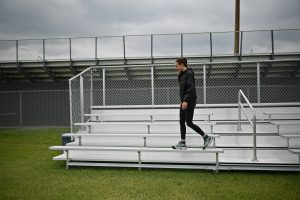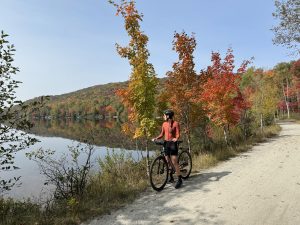Replace your pinterest rehab with phase-based exercises
When patients ask me about how long it will take their injury to heal, the implied question is really ‘When will I be out of pain and doing things again?’

The general timelines that physios give for these answers are based on healing timeframes for the initial healing of an injury to happen – 6-8 weeks for a bone fracture to form the initial callous, 3-6 weeks for a ligament sprain and 2-6 weeks for a muscle strain.
The problem we run into is when the patient then has the expectation that at that 6 week mark, everything will be back to normal which often isn’t the case.
Rehabilitation phases can provide a framework for going from the acute healing stage, the foundational rehab exercises and into the strength re-building and back to activity stages.
What are the rehab phases?
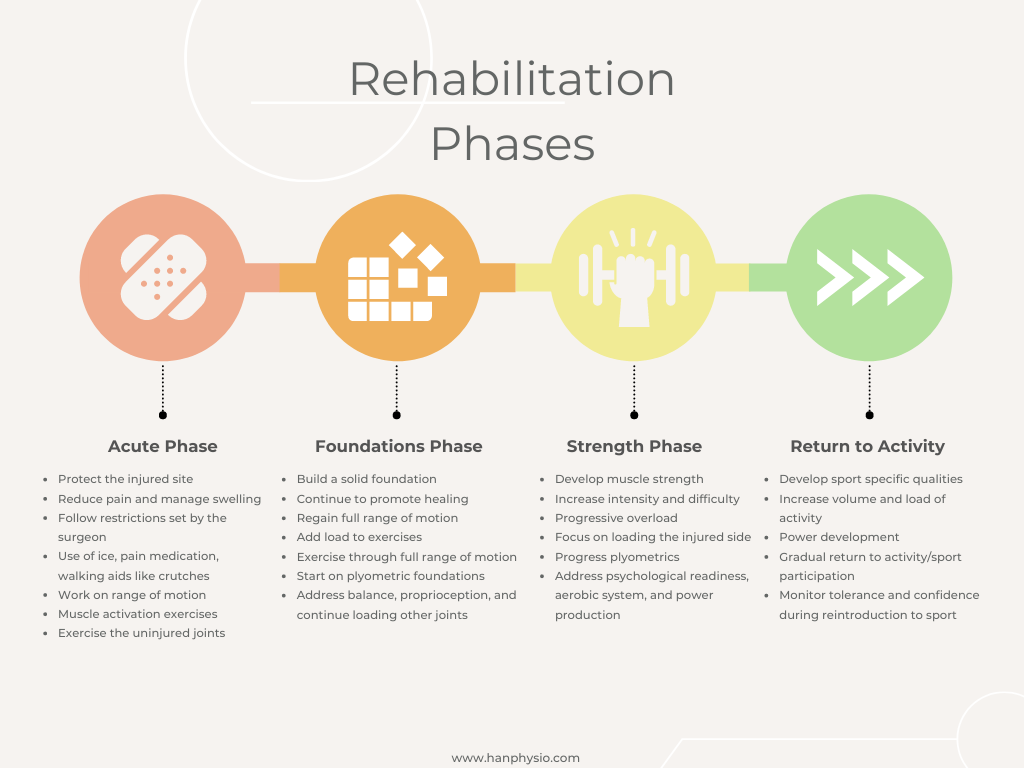
ACUTE PHASE
The aim is to provide a nourishing healing environment for the injury to go through the normal inflammatory cascade to bring healing nutrients and blood to the area.
- Protect the injured site
- How to: usually this means doing things “as tolerated”, so using crutches or a brace to walk and weightbear only as tolerated, pain is your guide here
- Reduce pain and manage swelling
- now is not the time to push into pain, you can use ice or NSAIDS however, they sometimes blunt the natural inflammatory healing process
- How to: reduce the aggravating movements and activities, use compression and elevation (above the heart) of the injured area to reduce swelling
- Work on range of motion and muscle activation and the non-injured joints
- How to: ask your physio for specific exercises that will not injure the area further like quad squeezes for knee injuries or the alphabet for ankle injuries
FOUNDATIONS PHASE
The aim is to promote optimal healing while setting the body up to build a strong foundation to make your comeback on. This means repetitions of the basics and monitoring pain and swelling.
- Progress your exercises
- How to: ask your physio how you can build the foundational movement patterns for your injury. For example a squat pattern for a knee injury or a hinge pattern for a hamstring injury
- Add load where you can
- How to: using a metronome for tempo exercises or adding a dumbbell for simple foundational exercises as you move through this phase
- Respect the healing process
- How to: continue to do exercises ‘as tolerated’ which means pain and swelling should not be increasing after the exercises
STRENGTH PHASE
The aim is to start challenging the injured area to build back the muscle bulk that we quickly lose during periods of immobilization or disuse.
- Progressive overload
- How to: ask your physio for exercises that challenge the injured area more directly, and within bigger compound movements, eventually adding more weight, load and intensity to these exercises
- Treat the whole person
- How to: monitor your psychological readiness or fear of certain movements so that you aren’t avoiding placing the injured area into positions or creating a mental roadblock to return to activity in the next phase
- Power production and plyometrics
- How to: the foundation was built in the previous phase so now add intent to your movements, become fastand springy for your plyometrics and become explosive and launch yourself through your power exercises
RETURN TO SPORT (ACTIVITY)
The aim here is to get sport-specific and return to the meaningful activities or sports that you normally participate in.
- How to: you may need your physio and coach to work together or be referred to a S&C coach to get the intensity and volume that you would be used to doing in your regular sport
- For example, here’s a return to ski plan for full day on the ski hill:
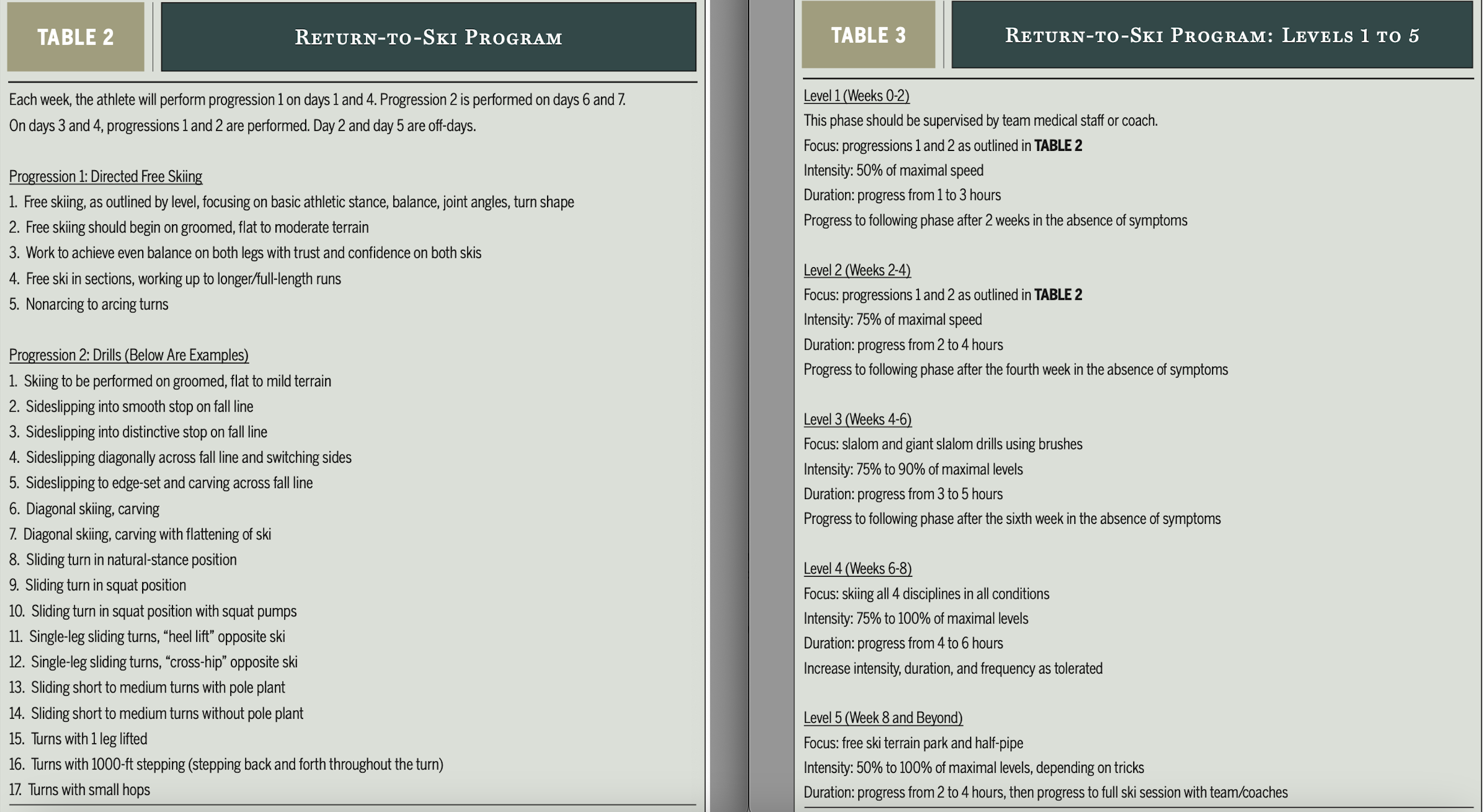
Return to performance, the forgotten phases
The question is do you just want to be pain free or do you want to BE BETTER? This can help reduce the risk of re-injuring the area by continuing to work on your performance and reasons you may have been injured in the first place.
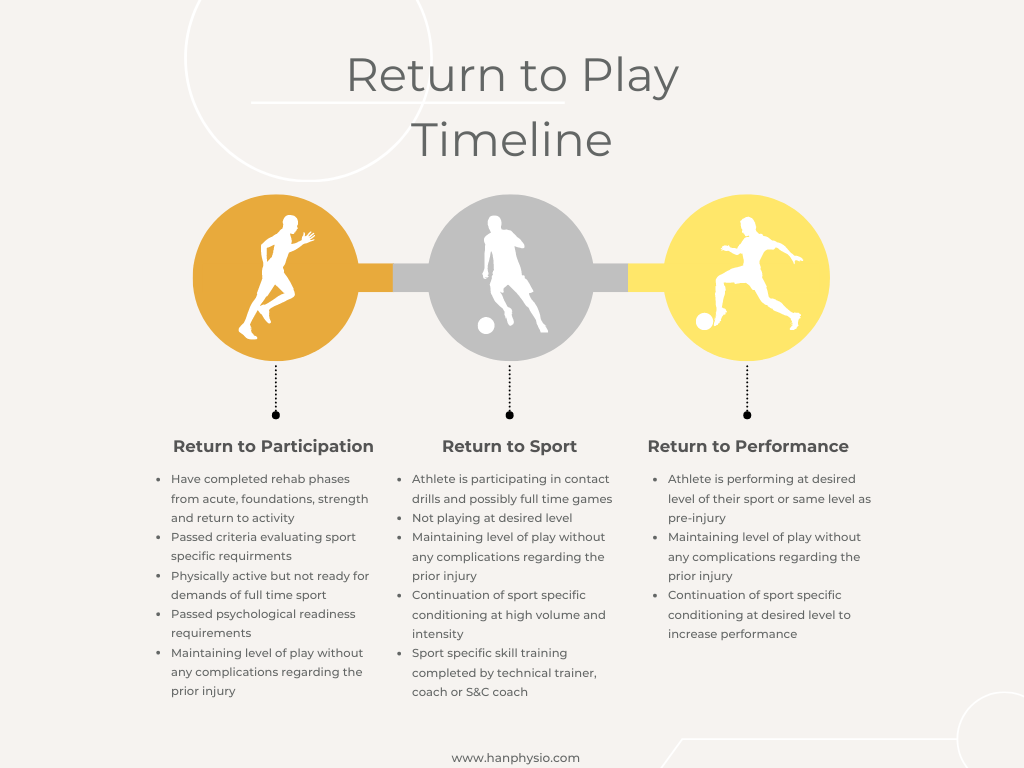
RETURN TO PARTICIPATION
- Work back up to full time play
- How to: using the gradual approach from the last phase of rehab, continue to build the volume and intensity to what you completed in a week, or month, or quarter
- Your exercises and training might still have an injury specific focus for example, inner range hamstring exercises for ACLR, or lateral hopping drills and power exercises for field cutting sports
RETURN TO SPORT
- You are likely back in game situations but not full time or full throttle
- How to: keep working!
- Your exercises and training might look just like your normal training
RETURN TO PERFORMANCE
- With a performance coach or S&C, or a physio with the right experience, you can work on building better athletic qualities to reach your goals
- How to: this usually requires ongoing testing using health-tech equipment to find the discrepancies, and programming that doesn’t interfere with your playing schedule
If you need more guidance for your individualized rehab for your injury, you can book a virtual appointment with me.
Reference:
- Kokmeyer, Dirk & Wahoff, Michael & Mymern, Matt. (2012). Suggestions From the Field for Return-to-Sport Rehabilitation Following Anterior Cruciate Ligament Reconstruction: Alpine Skiing. The Journal of orthopaedic and sports physical therapy. 42. 313-25. 10.2519/jospt.2012.4024.
